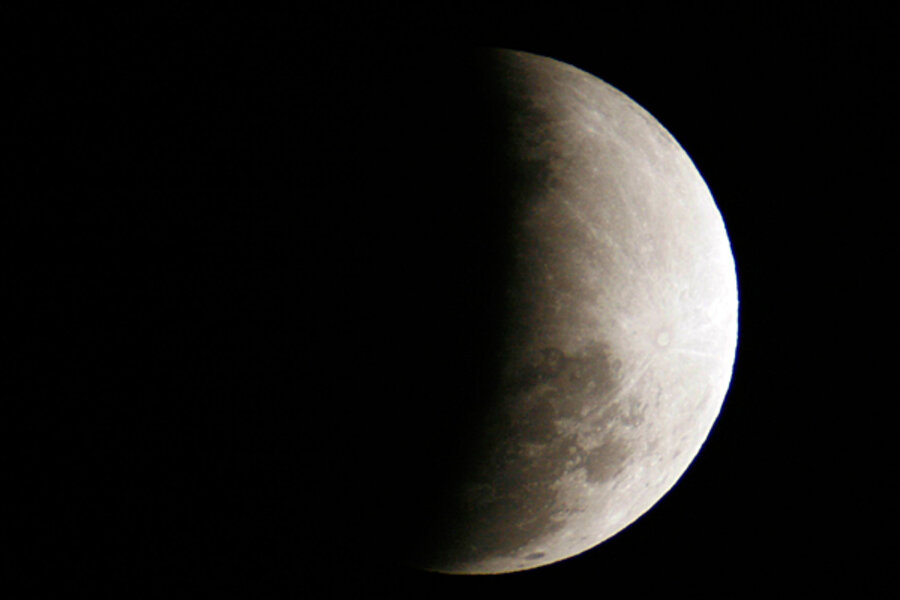Lunar eclipse Wednesday to last 100 minutes – longest in 11 years
Loading...
Skywatchers across much of the world are getting set for a total lunar eclipse June 15 that promises to shroud the moon in the darkest part of Earth's shadow for 100 minutes – the longest stretch of deep dimming in 11 years.
This eclipse of the moon will not be visible in North America. But people across a broad swath of the planet – from Europe east and south to eastern Australia and New Zealand – will be able to catch at least the darkest phase of the eclipse, weather permitting.
The moon's brightness will take a decided dive during the height of the event, potentially providing skywatchers with good views of features in the night sky they might not otherwise be able to see.
During a 1982 total eclipse that traced a path across the same part of the sky as the June 15 eclipse of the moon, "I was amazed at how brilliantly the summer Milky Way glowed, because it was all but invisible" during the portions of the eclipse when the moon was passing through lighter portions of Earth's shadow, according to Fred Espenak, an astrophysicist at the Goddard Space Flight Center in Greenbelt, Md., in an ecplise forecast he posted on the center's web site.
Total eclipses occur when the moon passes through a dunce-cap shaped shadow Earth casts into space on its night side. The shadow has two main portions – an outer portion, or penumbra, which begins the dimming process, and the umbra, the inner, darkest part of the shadow.
The eclipse is set to begin at about 1:24 p.m. Eastern Daylight Time, with the total eclipse beginning two hours later. The moon will be at its darkest at about 4:12 p.m. EDT.
The total portion of the eclipse will last for 100 minutes on Wednesday night because the moon will be crossing through the shadow close to an imaginary line stretching from the peak of the dunce cap through the center of the Earth. This represents the thickest part of the umbra at any given distance from Earth.
During this time, spectators will see the moon shift from its bright white before the eclipse to varying shades of orange to deep orange or even red when it passes through the umbra.
In effect, the moon is being treated to a three-hour sunset. Sunlight reaching the moon travels along a path that takes it through an ever thickening atmosphere as the moon slips behind Earth.
As the light's path through the atmosphere gets longer, increased scattering saps it of its blue components, leaving a palette of dark oranges and reds to bathe the lunar surface.
For people who don't live in the eclipse's path, the Sky Watchers Association of North Bengal in India will be one of several organizations webcasting the event live.
And for those who live in North America, there is yet hope for seeing a lunar eclipse this year. Another occurs on Dec. 10. However, Dr. Espenak calculates that for North Americans, western regions will get better views than eastern regions because the eclipse will be occurring as the moon is setting.





